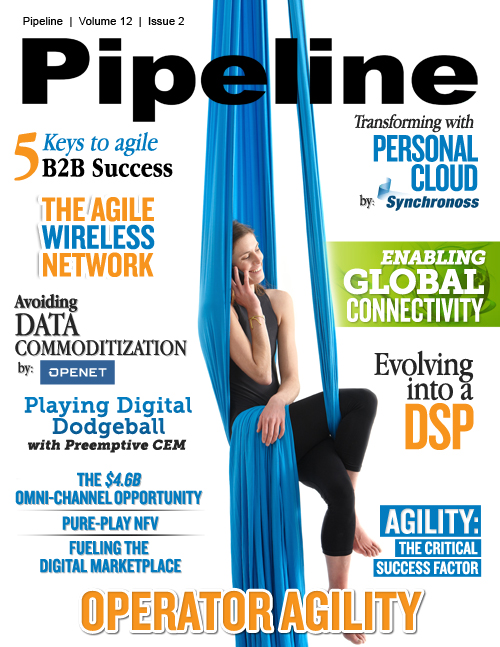Avoiding Data Commoditization: The Need for Smarter Customer Engagement
Operators have the established channels to interact with customers and they’ve been using these for several years to provide real-time notifications. Regulatory compliance and billing processes require customers to get alerts when they near their data quota and when roaming. However, many operators are using these alerts to upsell data blocks (e.g. 500MB for $5, valid until start of new billing period) and fixed price data roaming service passes. The obvious extension is to take this one step further and start upselling real-time contextual aware offers.
The ability to know when to engage with a specific customer to make a specific offer requires the use of a combination of historical business intelligence and real- time streaming analytics. Looking at an example, a customer could be a heavy Facebook user who drops off usage around day 24 of their billing cycle every month. This is probably due to concerns about overage charges and not using up their quota. So the opportunity is for the operator to send a personalized offer to sell a 500MB Facebook only pass valid for 7 days for say, $5, when the customer accesses Facebook on day 23 of the billing cycle. Or if an operator sees that someone spends a lot of time streaming music and has a high churn propensity score, why not offer them one month free Spotify Premium (assuming the operator has a partnership with Spotify), the next time they start listening to a streaming music service.
3. Service Development and Delivery
As operators look to increase relevance with customers through more personalized customer engagement, they’ll need to have a much wider range of offers that reflect the needs of an increasingly segmented customer base. Customers are demanding more services and in faster time. Add in the pressure of faster time to market and it can be seen that the legacy approach to product and service development and delivery of protracted product development time frames will not work.
Operators want to offer more value-based offers, tailored to suit various customer needs and capture maximum revenue from different segments. This means an increasing amount of offers that often need to be defined and launched in shorter timescales. In order to do this, operators are increasingly looking towards a centralized offer catalog.Offers are built in the offer catalog and contain the real-time triggers to activate an offer being presented to a customer. In order to enable fast time to market, offers need to be configured easily, allowing non-technical teams to be involved. New offers, as well as promotions, or loyalty rewards should be quickly and easily activated, tested, edited or removed. Once added to the offer catalog, offers should be instantly available to appropriate subscribers. A centralized offer catalog enables operators to greatly simplify the offer development process and significantly save time. As a result, campaigns and bundles can be rolled out much faster to keep ahead of the competition and engage with customers through the provision of relevant and personalized offers.
By bringing customers more relevant choices with context-sensitive offers sent directly to their devices in real-time, operators can substantially increase sales conversion rates and avoid the risk of confusing customers with too many offers and options. The context can relate to profile, usage, time, location or network data.
4. Monetization
As operators develop more offers for an increasingly segmented customer base the ability to be able to quickly apply pricing and charging rules to a wide range of new offers is fundamental. There have been many well documented cases of operators giving services away ‘for free’ dressed up as marketing offers, while the reason for this largesse was that the billing system couldn’t charge for this new service. Operators cannot be restrained by failures in billing systems when rolling out new products, services and offers.
- Fast time to market—e.g. rules based engines that enable pricing and charging rules to be quickly developed by the operator
- Flexibility required to quickly develop sophisticated data charging models. These include charging models incorporating third party content and applications, sponsored data with partners (e.g. free TV application usage sponsored by, say, HBO, advertisers, venues, etc.), data sharing and more.
- Ability to be used across all services, whether pre-paid or post-paid, voice or data. A single profile for each customer which enables them to rapidly define and roll out targeted offers and promotions.
- Ability to act as an adjunct to existing IN platforms and billing systems. This way all real-time data collection, rating and charging can go through the charging system, with circuit switched voice traffic going through legacy systems. Charging will also send a rated data record to the billing system to add to the customer's bill.



















